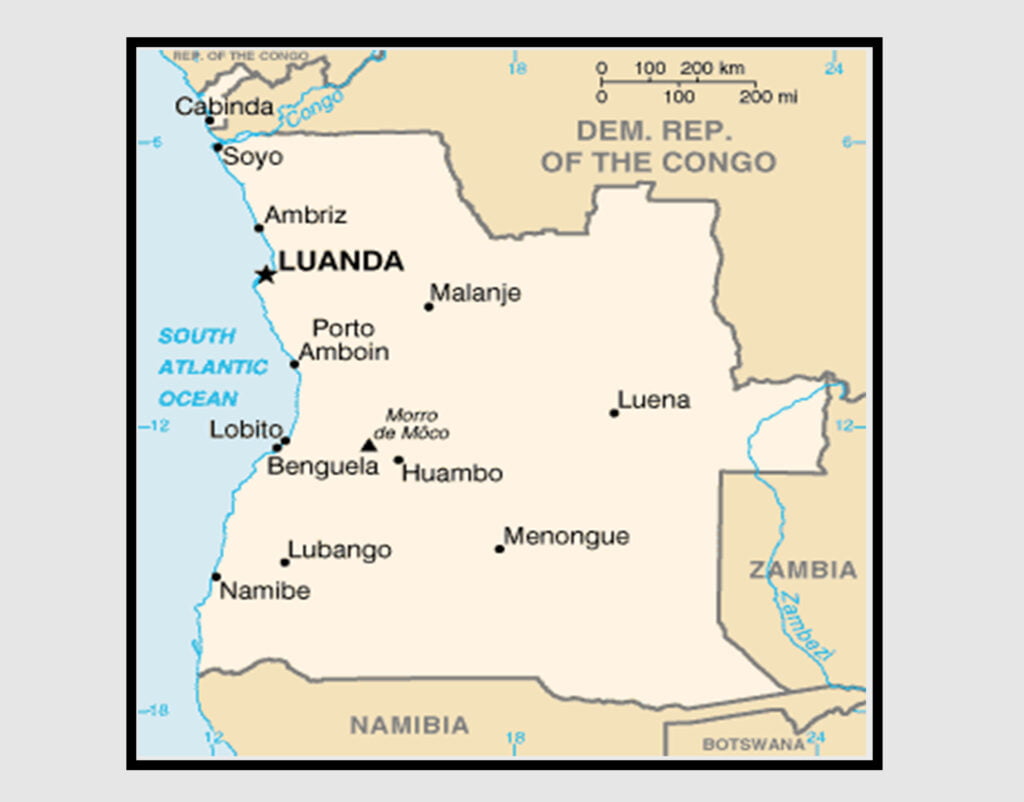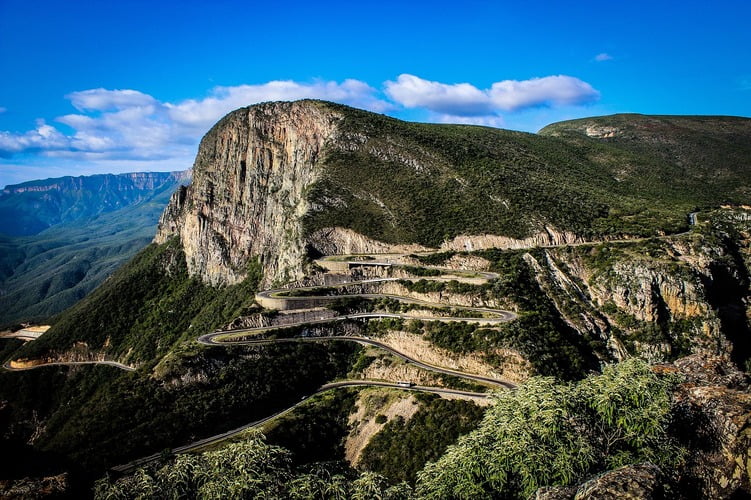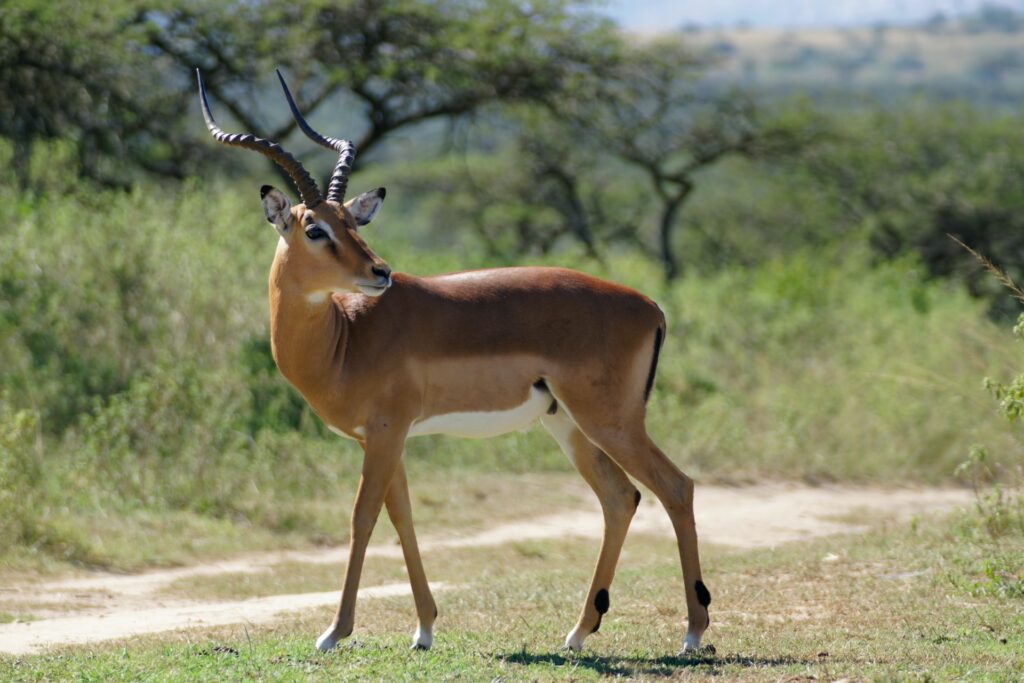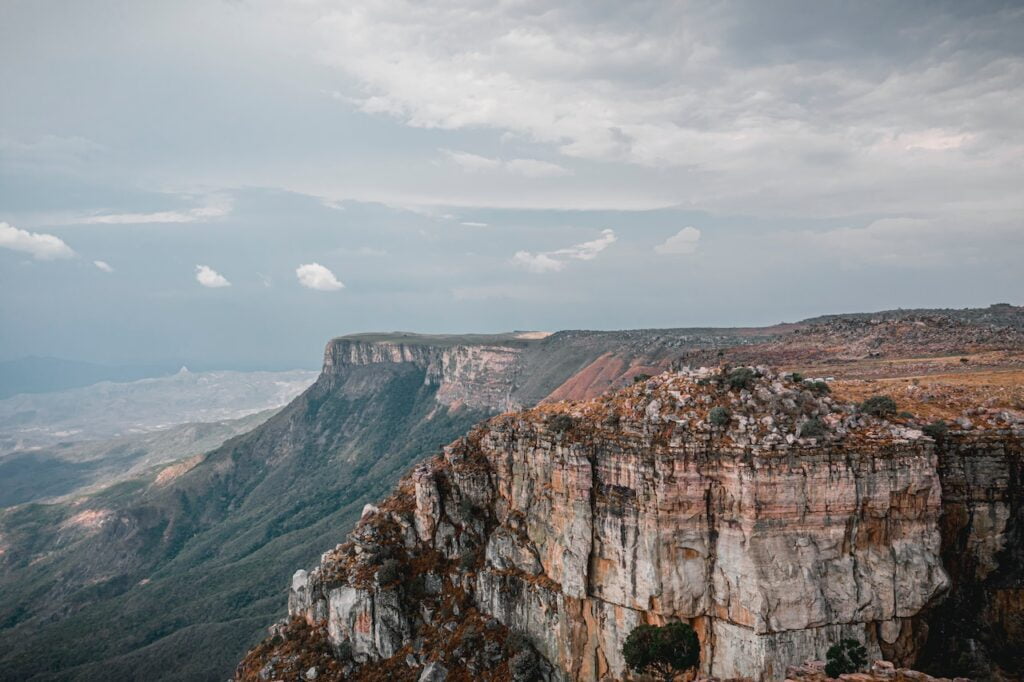Angola is a country that boasts a rich history and an abundance of natural beauty, making it an attractive destination for travelers. It’s unspoiled landscapes and lively cultural scene is sure to captivate anyone who visits. Angola is a fascinating country that boasts a wide range of landscapes, from the dry and barren Namib Desert to the verdant and lush rainforests of Kissama National Park. Its cultural diversity is also a highlight, with various ethnic groups adding to the country’s rich tapestry. Angola is truly a land of hidden gems and intriguing contrasts.
Welcome to this blog post where we will explore 10 facts about Angola. We’ll take a deep dive into its tumultuous history, the irresistible charm of its capital city, Luanda, the ongoing economic changes, and the vibrant cultural customs that define its people. Embark on a virtual adventure with us as we explore the captivating charm of Angola, a country poised for a bright future.
Land Area: 1.247 million km2
Official language: Portuguese
Currency: Angolan Kwanza
Population: 35,894,670 (2023)
Capital: Luanda
Table of Contents
Facts of Angola’s History and Geography
History of Angola
- Historically, Angola’s pre-colonial population consisted of a wide variety of tribes and peoples, many of whom spoke Bantu.
- Angola was colonized by the Portuguese in the late 15th century, and they quickly established trading posts and began making use of the area’s resources, especially its slave population.
- Struggle for Independence: Various nationalist groups emerged in the early 20th century to struggle for independence from Portuguese colonial rule.
- In the 1960s, the Popular Movement for the Liberation of Angola (MPLA), National Front for the Liberation of Angola (FNLA), and National Union for the Total Independence of Angola (UNITA) all went to battle in a guerrilla war to gain independence from Portugal.
- Angola declared its independence from Portugal in 1975, but the subsequent civil war that was sparked by political rivalry amongst liberation parties continued until 2002.
- External interventions and internal power struggles symbolized the Angolan civil war, which saw the MPLA, the UNITA, and other groups all competing for control of the country.
- The conclusion of the civil war marked a period of peace and reconstruction, during which national recovery, demining, and the restoration of damaged infrastructure were top priorities.
- The oil and diamond sectors helped propel Angola’s economy to new heights, propelling it to the forefront of Africa’s expanding economies.
- Since the conclusion of the civil war in Angola, the politics of the nation has been relatively stable, with the MPLA continuing to hold power and Joo Lourenço elected as president in 2017.
- Angola is making efforts to diversify its economy by investing in areas like agriculture, tourism, and manufacturing in an effort to reduce its dependence on oil while encouraging long-term growth.
Geographical Facts of Angola

- Angola lies in Southern Africa and is bounded to the south by Namibia, to the east by Zambia, and to the north by the Democratic Republic of the Congo.
- It has a lengthy coastline reaching over 1,600 kilometers (1,000 miles) along the Atlantic Ocean to the west.
- Angola is the seventh-largest nation in Africa, with an area of around 1,246,700 square kilometers (481,354 square miles).
- The nation is noted for its diversified terrain, which includes gorgeous coastal plain views, undulating plateaus in the middle area, and rocky mountains in the east.
- Angola’s enormous water resources are aided by numerous important rivers, notably the huge Congo River, the Cuanza River, and the Cubango River.
- Mount Moco is Angola’s highest peak, reaching 2,620 meters (8,596 feet) above sea level.
- Angola’s climate varies throughout the nation, with the northern sections having a tropical environment and the southern regions experiencing a more dry climate.
- Angola has a lot of natural resources, such as oil, diamonds, gold, iron ore, and agricultural goods like coffee and cotton.
- The country is noted for its rich wildlife, with national parks and reserves housing elephants, giraffes, lions, zebras, and a variety of bird species.
- Angola’s geographical position and natural beauty make it a popular ecotourism destination, with possibilities for animal safaris, experiencing natural treasures, and relaxing on the lovely shore.
The Top 10 most interesting facts about Angola are listed below.
01. Angola’s Breathtaking Landscapes and Ecological Diversity

Angola’s gorgeous scenery and natural diversity put it on par with the world’s most beautiful places. This African country is a paradise for outdoor lovers, from the scenic coastal plains along the Atlantic Ocean to the steep highlands and deep valleys in the interior. Mussulo Island’s beaches are among the best in the world, with turquoise seas and fluffy white sand, and the views from Tundavala’s towering cliffs are breathtaking. The Namib Desert is a vast interior region of Namibia characterized by towering sand dunes whose colors fluctuate with the movement of the sun.
Northern Angola is home to a plethora of plant and animal life, including chimpanzees, gorillas, and colorful birdlife. Traveling throughout Angola, you’ll see a wide variety of ecosystems, including wildlife-rich savannahs, jungle-lined rivers, and spectacular waterfalls like the Kalandula Falls. Angola’s dedication to protecting its natural history and maintaining various ecosystems is reflected in the country’s rich biodiversity. Nature enthusiasts and adventurers will never forget their time in Angola, whether they go to the country’s isolated interior or take in the coastline’s magnificence.
02. Rich Cultural Heritage
Traditions, conventions, and a strong feeling of community all contribute to Angola’s cultural tapestry. Indigenous peoples, Portuguese colonialism, and the tenacity of the local population all contributed to the cultural patchwork that is modern Brazil. Semba and Kizomba, two popular forms of traditional Angolan dance, are pulsating examples of the country’s rich musical heritage. Angola is home to a thriving arts scene, with everything from complex handicrafts to bright paintings and sculptures depicting scenes from the country’s rich history and customs.
The Carnival is only one example of the kind of jubilation that permeates Angolan culture. Muamba de galinha (chicken stew) and funge (a staple made of cassava flour) are just two examples of the many delicious foods that reflect Angolans’ pride in the country’s rich cultural diversity. The spiritual beliefs and practices of the Angolan people are deeply ingrained, and traditional rites and rituals continue to carry great importance. Visitors to Angola may see how the perseverance, ingenuity, and vitality of its people are reflected in the country’s storied past by participating in the country’s engaging customs and enjoying the friendly locals’ generous hospitality.
03. Festivals and Celebrations
The people of Angola have a zest for life that is reflected in the country’s many festivals and festivities. Festivals in Angola are a great way to dive deep into the culture of the country, with its vibrant colors, lively performances, and enthusiastic crowds. The Carnival, a brilliant sight of parades, costumes, and music, is one of the most well-known events and takes over the streets of towns like Luanda. At this time of year, both residents and tourists alike gather to dance to the pulsating beats of Semba and Kizomba and share their contagious enthusiasm.
Angola also hosts the religious and cultural festival Festival of the Sacred Kings of the Congo, which honors the country’s Afro-Brazilian roots. Rituals honoring the dead are performed by participants as they dress in extravagant costumes and dance to the sound of drums. The Chokwe people commemorate their ancestry with the Festival of Mucanda, which features traditional dances, storytelling, and rituals. Inviting tourists to participate in the celebrations, observe the vivid customs, and make lasting memories of the country’s dynamic and vivacious spirit, these and other festivals in Angola give a window into the country’s rich cultural tapestry.
04. Angolan Unique Cuisine
The cuisine of Angola is a wonderful representation of the country’s rich history and many cultures. Angolan cuisine is a delicious blend of flavors and textures, influenced by native traditions, Portuguese colonialism, and regional specialties. Funge, a staple food derived from cassava flour, forms the foundation of many traditional recipes in Angola. Chicken stew cooked in palm oil with spices and veggies is called moamba de galinha and is a popular national meal. Mufete is a delicious seafood platter that showcases Angola’s coastal richness. It often consists of grilled fish or prawns, funge, and a variety of sauces.
The country’s penchant for bold tastes and shared meals is reflected in dishes like calulu, a substantial stew cooked with dried fish or meat, veggies, and palm oil. Delicious street foods like cocada (coconut candy), muamba de ginguba (peanut stew), and roasted maize are just a few examples of Angola’s distinct cuisine. You can’t go wrong with doce de ginguba (peanut candy) or bunde de banana (banana cake) for dessert. Experience the warmth of Angolan hospitality, appreciate the unique flavors of Angola, and acquire a new understanding of the rich cultural tapestry that makes up this country by sampling some of the country’s delicious cuisine.
05. Giant Sable Antelope

The Angola Giant Sable Antelope, or Palanca Negra Gigante, is a magnificent and critically endangered animal that is an integral part of the country’s rich biodiversity. The Giant Sable is one of the most stunning antelope in the world due to its glossy black fur, massive curving horns, and graceful build. This well-known antelope is found only in Angola, where it lives in the country’s isolated forests and savannahs. Loss of habitat, poaching, and civil turmoil in Angola have all contributed to the antelope’s severely endangered condition.
Conservation projects and national parks like Cangandala and Luando provide safe havens for the antelope population and contribute to efforts to maintain this amazing species and its environment. The Giant Sable Antelope is a representation of Angola’s dedication to protecting its native species and a demonstration of the value of biodiversity. Spotting one of these beautiful animals is a once-in-a-lifetime opportunity for nature lovers and a sobering reminder of the need of maintaining conservation efforts to guarantee the continuing existence of this fascinating species for future generations.
06. Two Iconic Waterfall

There are two world-famous waterfalls in Angola that draw tourists in with their majesty and splendor. First, there is the spectacular Kalandula Falls, popularly called the “Niagara of Angola.” These magnificent falls, found on the Lucala River in the Malanje province, flow over a huge horseshoe-shaped rock and drop around 105 meters (344 ft) into a scenic valley. The sheer velocity of the water produces a mist that hangs in the air, contributing to the ethereal ambiance. The second major waterfall is the magnificent Ruacana Falls, which may be found on the Kunene River between Angola and Namibia.
The Kunene River drops precipitously down a set of steep stairs, creating a spectacular curtain of water that mesmerizes anybody who sees it. Listening to the water cascade and feeling the mist wrap around you is a wonderfully revitalizing experience. The Kalandula Falls and the Ruacana Falls are two of Angola’s many natural marvels that showcase the raw strength and beauty of the country’s rich water resources and draw visitors to the country to marvel at the amazing landscapes they adorn.
07. The Tundavala Fissure

The Tundavala Fissure is a natural wonder and one of Angola’s most spectacular geological phenomena. This wide fissure in the province of Hula in the south provides a breathtaking view that never fails to wow. The Tundavala Fissure, formed by natural forces over the ages, displays a stunning scene of cliffs and valleys that spread as far as the eye can see. With depths of up to 1,000 meters (3,280 ft), the enormous fissure provides a breathtaking vantage point from which to survey the surrounding landscape.
Views of the Namib Desert from the peak are breathtaking, especially in comparison to the lush vegetation of the nearby mountains and plateaus. The Tundavala Fissure is transformed into a breathtaking work of art by the setting sun, which bathes the area in a kaleidoscope of hues and shadows. The Tundavala Fissure is a spectacular example of the natural grandeur and geological marvels that can be found in Angola and should not be missed by any explorer, photographer, or admirer of the great outdoors.
08. Angola’s Diamond Industry:
The diamond trade has been crucial to the development of Angola’s economy and international relations. Angola is one of the world’s leading diamond producers because of its rich diamond deposits. Foreign investment and economic progress in Angola may be directly attributed to the country’s diamond industry. Rich diamond reserves exist under the surface in the provinces of Lunda Norte and Lunda Sul, where the majority of the country’s diamond mining activities are located. The government of Angola has introduced reforms to increase openness, responsibility, and eco-friendliness in the sector, leading to widespread changes in recent years.
The diamond trade in Angola is guaranteed to be conflict-free and economically beneficial because of the country’s participation in the Kimberley Process Certification Scheme. In addition, initiatives have been taken to promote domestic diamond beneficiation, where diamonds are cut and polished domestically to increase their value and provide local jobs. Progress has been made in Angola’s diamond sector, which now prioritizes social progress, economic diversification, and environmentally friendly mining methods. Since Angola’s diamond deposits are so substantial, the diamond industry continues to be an important economic driver and public emblem of the country’s natural richness.
09. The second-largest oil producer in Sub-Saharan Africa
Angola is a regional and global oil powerhouse, producing more crude than any other country in Sub-Saharan Africa. Angola’s oil output is crucial to the country’s economy and the global energy market because of its large offshore oil resources and huge onshore reserves. Since the oil industry’s inception in the 1960s, Angola has seen massive expansion and investment. Angola’s government now collaborates with international oil firms to extract, process, and export crude oil, which generates cash and propels economic growth. The modernization of Angola may be attributed in large part to the oil business, which has spurred the construction of infrastructure, the creation of jobs, and the introduction of new technologies.
Angola’s oil exports are significant since they provide energy to nations all over the world. The country’s prime location on the Atlantic coast facilitates the easy transport and export of oil, further establishing its status as a global powerhouse in the sector. Angola is aware of the need to diversify its economy away from its reliance on oil in order to promote sustainable development in other areas. Angola has both possibilities and problems as a result of its oil riches, and the success or failure of its continuous attempts to manage and utilize this lucrative resource for the benefit of its people will determine the country’s economic and political trajectory for the foreseeable future.
10. Angola’s capital, Luanda

Angola’s capital, Luanda, is a thriving and diverse metropolis that reflects the country’s history, culture, and economic importance. Luanda, Angola, a city on the Atlantic coast, is a fascinating combination of traditional African culture and colonial architecture. The city has become a significant economic center in Africa, and this is reflected in the skyline, which is littered with skyscrapers, gleaming retail malls, and throbbing marketplaces. People of many different nationalities and ethnicities live together peacefully in Luanda. The city is home to several museums, theatres, and concert halls that feature the works of Angolan artists.
Luanda’s colonial heritage may be seen in the Fortaleza de So Miguel, a fortification built in the 16th century, and the Palácio de Ferro, a magnificent iron palace. The city’s coastline is home to beautiful beaches including the well-known Ilha do Cabo, perfect for unwinding, dining on delicious seafood, and taking in the lively coastal environment. Luanda, the capital of Angola, is a thriving metropolis that has weathered the storm of growing urbanization by adapting to its new role as the country’s cultural, economic, and political nerve center.
And Here are some other facts about Angola:

- The Enigmatic Welwitschia Mirabilis: The Welwitschia Mirabilis is a unique plant species to the Namib Desert that has a lifespan of over a millennium. This extraordinary plant grows its two leaves continually throughout its whole existence. Seeing a Welwitchia Mirabilis in its native environment is a once-in-a-lifetime opportunity and a powerful illustration of the incredible biodiversity found in Angola.
- The Miradouro da Lua: Miradouro da Lua, or “Moon Viewpoint,” is a spectacular natural landmark in the vicinity of Luanda. This area, with its steep cliffs and vast valleys, is reminiscent of the moon’s terrain. Photographers in particular go there to take in the stunning scenery and explore the area’s unique geological features.
- Kissama National Park: Found in northern Angola, is well-known for the variety and abundance of its animal life as well as the pristine condition of its natural surroundings. Animals as diverse as elephants, hippos, and innumerable types of birds call this place home. Adventure seekers may go on safari in Angola, while nature lovers will love exploring the country’s stunning landscapes.
- Iconic Mussulo Island: Mussulo Island is a beautiful getaway not far from Luanda, the country’s capital. This tropical paradise is perfect for a variety of water sports, including swimming, snorkeling, and fishing, thanks to its powdery white sand beaches and brilliant blue seas. In addition to basking in the Angolan rays, tourists may embark on nature walks in the mangroves, have picnics on the beach, or do nothing at all.
- Quicama National Park: Quicama National Park, in western Angola, is a paradise for nature lovers. It’s the country’s biggest national park at about 9,600 hectares in size. Elephants, giraffes, zebras, antelopes, and a wide variety of bird species are just some of the animals that call this park home. Visitors to the park may enjoy the sights of Angola’s rich flora and fauna up close and personal.
- Tchitundo-Hulo’s Mysterious Rock Paintings: Thousands of ancient carvings may be seen in the Tchitundo-Hulo rock art site, which is listed as a UNESCO World Heritage Site. These Khoisan rock carvings date back thousands of years and include depictions of animals, humans, and mysterious symbols. Discovering this site is a one-of-a-kind opportunity to learn about the ancient history and creative achievements of the people of Angola.
- Cabo Ledo: Cabo Ledo, situated on Angola’s beautiful coastline, is a favorite vacation spot for surfers and sunbathers. The beautiful sandy beaches and reliable waves make it a great place to go surfing or try any number of other water activities. The stunning cliffs and clear, blue seas provide for an ideal outdoor retreat.
In Conclusion, Angola is a country full of natural wonders, cultural riches, and historical significance, as revealed by this exploration of the top 10 facts about it. Whether you’re looking for adventure, cultural immersion, or leisure, Angola has it all, from its majestic landscapes and gorgeous waterfalls to its rich music and dance traditions. The country’s wonderful food and genuine hospitality provide a welcoming environment for tourists, while animal safaris, stunning beaches, and historic colonial buildings further add to the country’s appeal. A trip to Angola will leave an indelible mark on those who take the time to learn about and appreciate the country’s rich history, stunning landscapes, and welcoming people.



